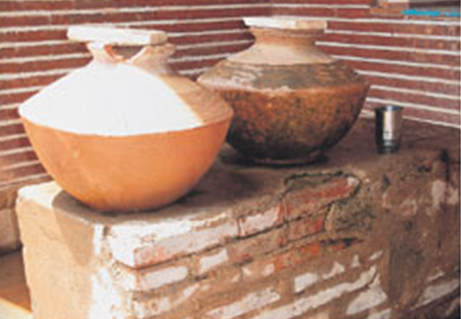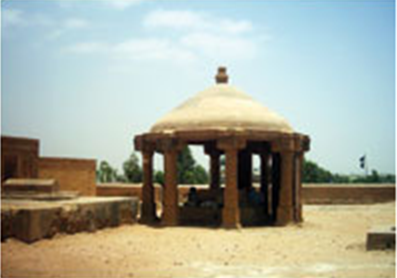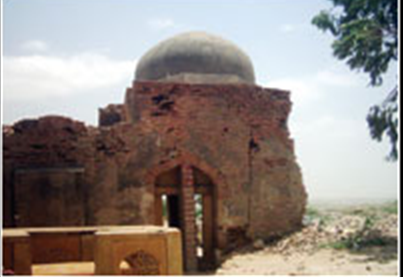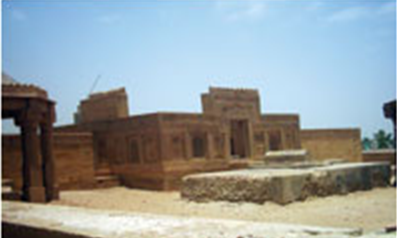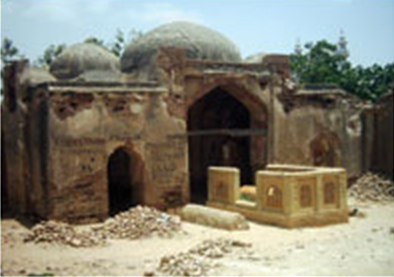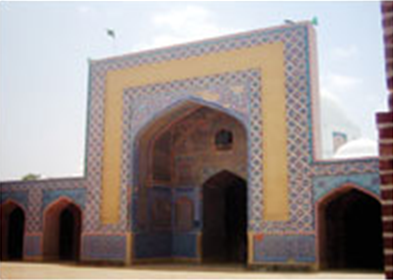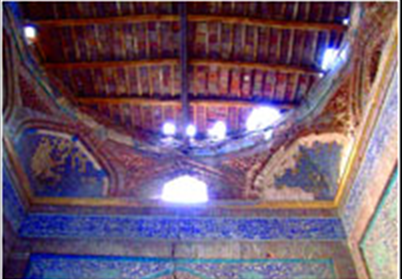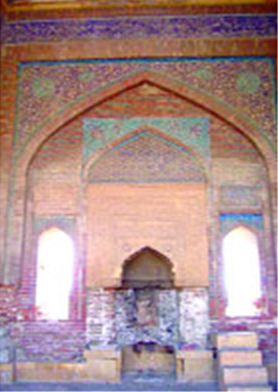Thatta, Sindh
This is a collection of articles archived for the excellence of their content. Readers will be able to edit existing articles and post new articles directly |
Contents |
Thatta, Sindh
A heritage treasure of Sindh
By Mohammad Babu Lasi
The city of Thatta is full of historical treasures that captivates visitors and leaves them awestruck. Even though there are many pieces of art and architecture that take one’s breath away, the most mesmerising is the Badshahi Mosque that leaves visitors with a sense of nirvana. The mosque was built over a period of three years (1644-1647) by the Moghul emperor Shahjehan. It covered 6316 square metre area which incurred an expenditure of almost eight lac rupees at the time. It bears 101 domes with an echo system that the imam’s voice can easily reach every corner of the mosque without using a loudspeaker. The mosque is extremely spacious and can accommodate approximately around 20,000 people.
It is sad to see that due to government negligence this novel piece of architecture is losing its appeal. The pond used for wazoo is full of stagnant water that makes it very unhygienic. The plants are drying up due to lack of water and there are no cleaning and washing facilities available which can be observed by thick layers of dust that covers the place. Even facilities such as potable water is unavailable, one can find two clay pots filled with water, the quality of which is highly questionable. Local area residents are of the view that renovations at the mosque are in progress; however, the pace is extremely slow. If authorities do not take appropriate measures to preserve this precious heritage symbol, chances are that we might lose a vital link with our history, art and architecture.
Thatta
Glimpses of Thatta’s glorious past
The historical city of Thatta is a living example of Sindh being a culturally rich place. Saima Ilahi shares some lovely moments of her trip to Thatta and its surrounding tourist spots
It was in the scorching month of May that we were given an opportunity by our university (University of Hyderabad) to go on an educational tour to Thatta.
Due to the hot weather of both Hyderabad and Thatta, most of the students were reluctant to undertake the excursion, but the curious and adventurous among us were not bothered by the weather or any other hurdle. Seeing my enthusiasm, some of my friends also showed interest and soon I, my friends and some faculty members set about planning the excursion.
A historically significant city Thatta, also called Thatto by the locals, is located 98 kilometres from Karachi, and about 100 kilometres to the southwest of Jamshoro. It has a 2,000-year-old history and was the capital of Sindh for four centuries and the hub of Islamic arts.
Our bus left for Thatta at about 9:30am from the old campus and it took more than two hours to reach our first destination, the Makli Hills necropolis, where we were welcomed by countless beggars.
Makli Hills give a glimpse of Thatta’s civilised and culturally rich past. It is considered as the largest ancient graveyard in the world, spread over an area of 15sq.km, and with numerous graves of commoners and dignitaries such as kings, queens, scholars, chiefs, saints, etc.
The unique aspect of these stone graves is that the designs carved on them have been done keeping in mind the gender difference. Tomb pieces of women’s graves display designs of jewellery, while men’s graves bear horses and riders. Each emperor tried to make the graves of his era more attractive than those of previous dynasties.
We shared our knowledge about the necropolis with each other, however, there was supposed to be a tourist guide available for providing us in-depth details about the history of this unique spot but he was sadly missing. Anyways, we had great fun as we cooled ourselves with kulfi.
After spending an hour at Makli Hills, our bus took us to the impressive Shah Jehan Mosque. This mosque is representative of Muslim and Mughal architecture and was built in AD1647 by the Mughal Emperor Shah Jehan. Its construction was completed in three years and was elaborately decorated with white, dark brown and blue tiles. Shah Jehan Mosque consists of 92 domes supported with arches so that the sound of the prayer could be heard in all parts of the large mosque without the use of loudspeakers.
The mosque has five doors including a magnificent main gate. Here we were allowed to stay for only half an hour by our tour organiser. Besides offering prayers, one can also enjoy cold lassi and some other edible items at this spot.
Next we proceeded to the magnificent and gorgeous Keenjhar Lake, where we made a two-hour long stop. This lake is situated to the north of Thatta, about 80kms from Jamshoro. About 20 miles long and six miles wide, the lake has boating facilities and many fishermen live in the boats too.
There were a lot of visitors there, some enjoying rides on the motorboat while others just hanging around the lakeside, cooling themselves with cold drinks, ice cream and even tea! As we ordered tea at a restaurant, the power went off and we came out to enjoy our tea and snacks in the open and airy environment.
At Keenjhar, air-conditioned cottages are also available for overnight stay. However, as we were not supposed to stay there so we left Thatta at 6pm, after having lots of fun and taking away lovely memories in our hearts.
Thatta: Dabgaran mosque
Faded splendour
By Yasira Naeem Pasha
There is a need to preserve what is left of the Dabgaran mosque before it is completelo to the ravages of time, writes Yasira Naeem Pasha
Traces of history can always be found in the remains of old buildings and architecture. And we, in Pakistan, are fortunate enough to have several such structures that have survived the ravages of time and are still standing tall, though in somewhat dilapidated conditions.
The Dabgaran Mosque in Thatta is an excellent example of a structure that has lost its lustre but is still a remarkable piece of human skill and imagination. It was built in 997/1588 by a local governor Khusrau Khan Charkas, a descendant of Changez Khan, who lived during the days of the Tarkhan rule. The interior and mosaic faience revetment indicate definite and unmistakable evidence of the pure and perfect influence of the Iranian art traditions, while the carved stone face of the arches is a masterpiece of the art practiced locally.
The mosque at its prime served as the main congregational place for the city of Thatta. Unfortunately, it is no longer as grand as it was. The entrance gateway and the cloisters, which must have been grand and impressive once, have fallen and disappeared.
The courtyard of the mosque, a rectangle measuring 96ft by 61ft, and the prayer chamber are now enclosed by a modern brick-wall with a five-foot opening in the centre on the east side for entrance. The courtyard has lost its original brick pavement, while the surrounding area, especially towards the east, outside the boundary wall, is overgrown with wild foliage.
The aisle-prayer chamber is, to a great extent, intact and has three compartments divided by two heavy arches. Originally, the opening of the prayer chamber had a low parapet, now fallen and gone. The two side openings still retain the projected horizontal frames. The surface of the exterior was originally treated with thick lime plaster with decorative panels in low recesses.
Inside the prayer chamber the main arch in the central compartment is elaborately decorated with a big panel of yellow sandstone, surmounted with another arched panel of glazed tile mosaics. The individuality of the stone panel has been emphasised by the use of yellow sandstone.
The floral decoration consists of full-blown lotuses, carved in high relief and placed one upon the other. The arched recess is sunk deep into the wall and the blank space on either side of the arch is filled again with small lotuses. The piers of the arched niches are provided with decorative palliates. On either side of the arches are two small arched openings, two feet and four inches wide, penetrating through the wall to provide light and air to the interior.
The comfort levels in the space seem to be well addressed. For example, the thickness of the wall is 20 inches which prevents much of the heat from getting in. The orientation allows the sun’s rays to reach only up to the boundaries of the courtyard in front of the prayer hall entrance even at peak sunlight hours.
The dome has a shape designed to keep the inside air trapped in the interior of building and so reduce the hot air flow. In addition to windows and wide openings, there are ventilators just below the ceiling.
As far as the building materials are concerned, the whole mosque structure is basically built in brick. Yellow sandstone is used in many places and glazed tiles are used on the two piers on either sides of the central opening.
The Dabgaran mosque lends a very impressive look to its surrounding area but is in dire need of repair and preservation. Its structure is still strong enough to give a dependable base for the restorers to work on. In addition, a lower level of artificial energy will be required if the building is brought back to life again and put into use.
Mughal buildings have always been designed according to the needs of the environment. For example landscaping elements like plants, water channels, use of bright colours were all part of the Mughal architectural style. These can be incorporated in order to recreate the grandeur of this historic mosque that is a valuable part of our heritage.
Thatta: Shahjehan mosque
The Jewel of the Thatta
Text by Q.A.M. and photographs by Arsalan
I remember visiting Thatta’s Shahjehan mosque as a child and it fired up my imagination. However, as adulthood dawned I appreciated its historical and architectural significance even more.
The 361-year-old mosque is an outstanding example of Mughal architecture in Pakistan. Shahjehan ordered its construction upon ascending the throne as emperor to commemorate his visit to Thatta while he was still a prince, according to the incredibly informative book Development of Mosque Architecture in Pakistan, published by Lok Virsa in 1991 and written by Dr Ahmad Nabi Khan.
Perhaps its most stunning aspect is the exquisite tile work, which reminds one of the graceful mosques of northern Afghanistan and Iran. So splendid is the tile-work that R.E.M Wheeler, in his Five Thousand Years of Pakistan, has written that “though somewhat poor in quality than the Dabgir (Dabgaran) mosque, the building presents the most complete surviving display of Persian tile work executed on the soil of Pakistan.”
Wheeler was certainly not off the mark for if one stares at the interior of the dome, it actually feels like one is under a canopy of stars. This and other intricate motifs offer moments of cosmic clarity in this house of God.
The mosque was started in 1644 and completed in 1647, financed by the royal treasury. There is a little confusion about its total cost, as according to the board placed inside the mosque, the cost came to around Rs900,000 at that time, while Dr Khan claims it cost Rs600,000. Perhaps the current mosque authorities have adjusted the final cost for inflation.
Another interesting fact about the mosque is that it has been constructed in such a way that the Imam’s voice can carry throughout the building, courtesy the hundred or so domes, without the use of a microphone or any other electronic devices.
The Shahjehan mosque has undergone quite a few renovations over the ages, the first during Mughal Emperor Aurganzeb’s rule, another by Murad Ali Khan Talpur in 1812, as well as by the British and the successive Pakistani governments. Interestingly, the gardens that exist at the entrance of the mosque, complete with walkways and fountains, are quite a modern addition, laid out in the ’70s.

